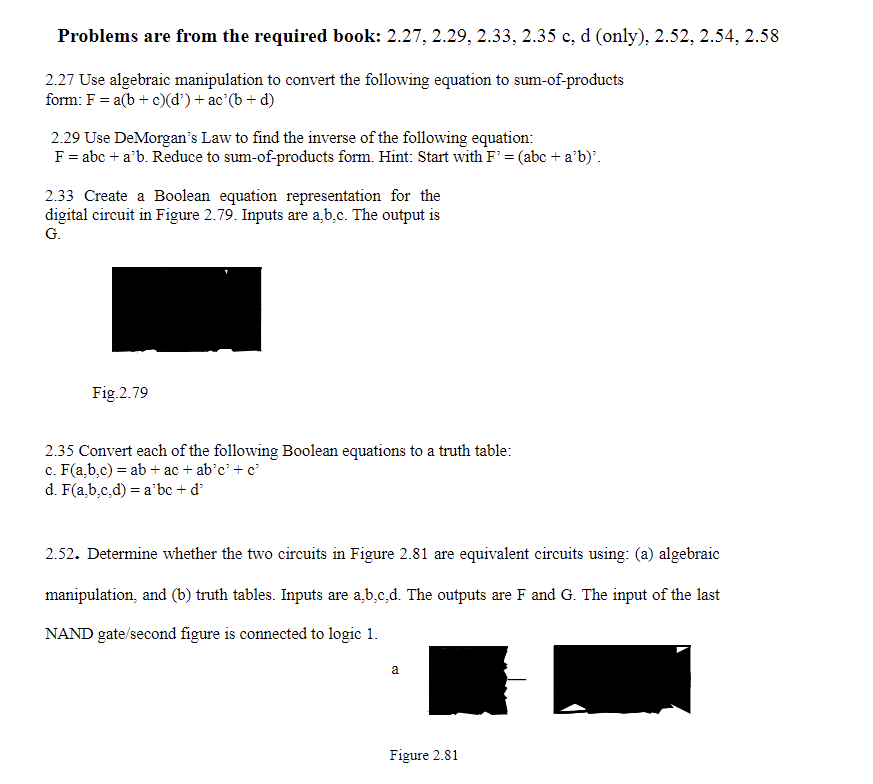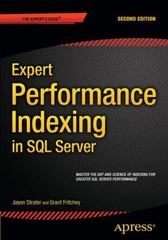Question
Problems are from the required book: 2.27,2.29,2.33,2.35c , d (only), 2.52,2.54,2.58 2.27 Use algebraic manipulation to convert the following equation to sum-of-products form: F=a(b+c)(d^('))+ac^(')(b+d)
Problems are from the required book:
2.27,2.29,2.33,2.35c,
d(only),
2.52,2.54,2.58\ 2.27 Use algebraic manipulation to convert the following equation to sum-of-products\ form:
F=a(b+c)(d^('))+ac^(')(b+d)\ 2.29 Use DeMorgan's Law to find the inverse of the following equation:\
F=abc+a^(')b. Reduce to sum-of-products form. Hint: Start with
F^(')=(abc+a^(')b)^(').\ 2.33 Create a Boolean equation representation for the\ digital circuit in Figure 2.79. Inputs are a,b,c. The output is\ G.\ 2.35 Convert each of the following Boolean equations to a truth table:\ c.
F(a,b,c)=ab+ac+ab^(')c^(')+c^(')\ d.
F(a,b,c,d)=a^(')bc+d^(')\ 2.52. Determine whether the two circuits in Figure 2.81 are equivalent circuits using: (a) algebraic\ manipulation, and (b) truth tables. Inputs are
a,b,c,d. The outputs are
Fand
G. The input of the last\ NAND gate/second figure is connected to logic 1.

Step by Step Solution
There are 3 Steps involved in it
Step: 1

Get Instant Access to Expert-Tailored Solutions
See step-by-step solutions with expert insights and AI powered tools for academic success
Step: 2

Step: 3

Ace Your Homework with AI
Get the answers you need in no time with our AI-driven, step-by-step assistance
Get Started


